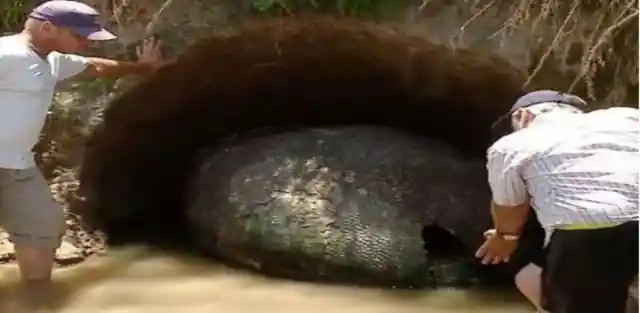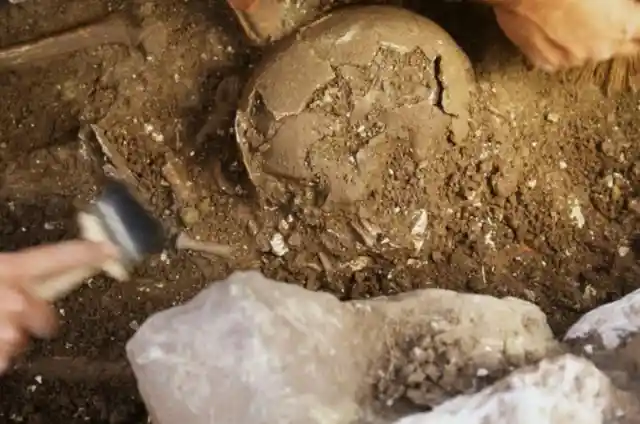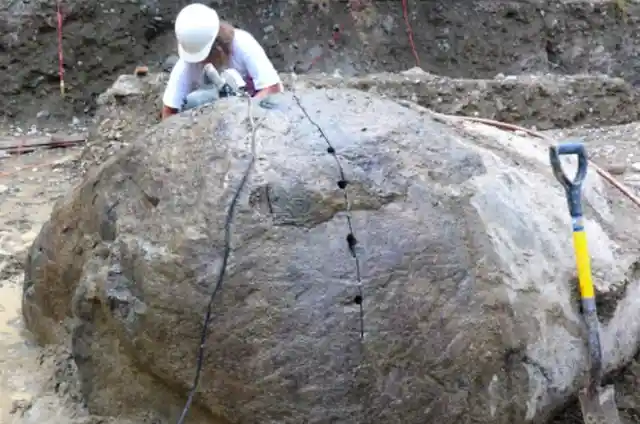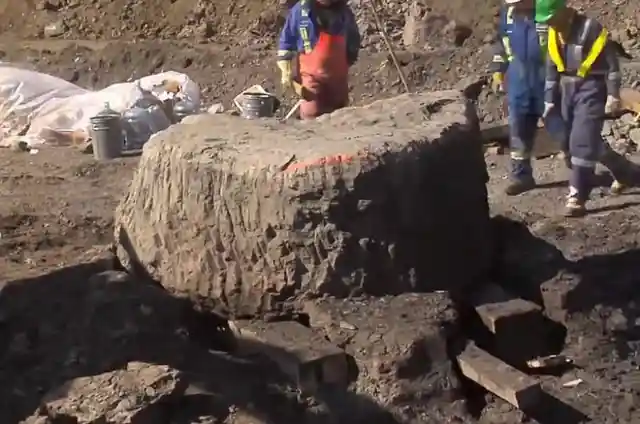
Were His Eyes Playing Tricks on Him?
Shawn Funk, a miner in Alberta, Canada, had been working in excavation for over a decade. He had seen all kinds of buried objects, from trash to valuable finds. However, nothing could have prepared him for what he was about to discover.

A Normal Day Turns Extraordinary
Funk was operating his heavy machinery at Millennium Mine, removing layers of earth. His job involved breaking through sand and stone, but he secretly hoped to unearth something remarkable one day. As he continued his work, his excavator hit something unusually hard, making a loud cracking noise.

Upon closer inspection, Funk noticed something strange about the rock fragments. Curious, he loaded them onto his truck for further examination. When he peered back into the pit, his heart started pounding—this was no ordinary rock.

A Race Against Time
Realizing the importance of his find, Funk called for backup. With urgency, he grabbed a shovel and began digging by hand, fearing the loose earth might collapse and bury his discovery. Fortunately, additional workers arrived with heavy equipment to carefully extract the massive rock.

As the rock was lifted, it suddenly split in half, revealing something truly astonishing. Officials from the Royal Tyrrell Museum of Paleontology arrived to investigate. What they uncovered left them in awe: a perfectly preserved fossilized dinosaur.

An Incredible Discovery

The fossil was identified as a Nodosaur, an armored herbivore that lived approximately 112 million years ago. Unlike typical fossils that only preserve bones, this specimen retained its teeth, skin, and even parts of its intestines—a rarity in paleontology. Scientists believe the Nodosaur was swept into a river during a flood, carried out to sea, and rapidly buried in sediment, which led to its exceptional preservation.

For six years, researchers meticulously examined and restored the fossil. They determined the Nodosaur weighed around 3,000 pounds when alive and had a robust, armor-plated body. The fossil remains one of the most well-preserved dinosaur specimens ever discovered and is now displayed at the Royal Tyrrell Museum.

Another Surprising Discovery
Thousands of miles away in Buenos Aires, Argentina, farmer Jose Antonio Nievas made an equally astonishing find. While walking near a riverbank on his property, he noticed a large, dark object partially buried in the mud. At first, he thought it was a massive egg, but as he dug deeper, he realized it was something else entirely.

Struggling to extract the object alone, Jose called for help. Even his wife was skeptical until she saw it herself. Eventually, local authorities and archaeologists arrived to investigate. What they found stunned everyone.

The Truth Behind the Object
The mysterious object turned out to be the fossilized shell of a Glyptodon, an ancient mammal related to the armadillo. These creatures, which roamed South America more than 10,000 years ago, resembled giant, armored armadillos and could grow as large as a small car.

The discovery ignited debates among scientists. Some questioned how the shell had remained so well-preserved and whether it had been tampered with. However, experts confirmed its authenticity, making it a significant find. The shell belonged to a juvenile Glyptodon, as fully grown ones could reach up to 11 feet in length.

A Moment in History
Both Funk and Jose stumbled upon extraordinary remnants of the past in what began as routine days. Their finds provided scientists with rare insights into prehistoric life and highlighted the incredible ways nature can preserve ancient creatures. These discoveries remind us that history is often buried right beneath our feet, waiting to be uncovered.
Leave a Reply